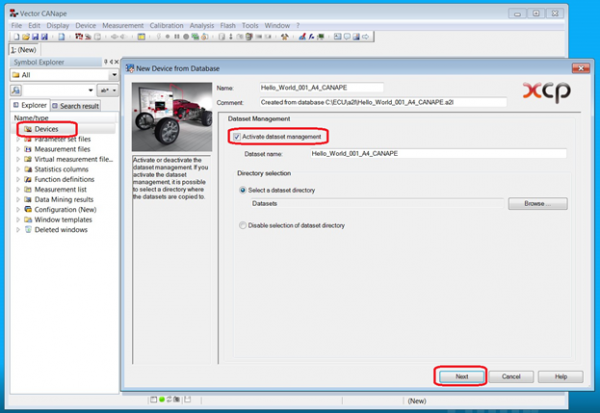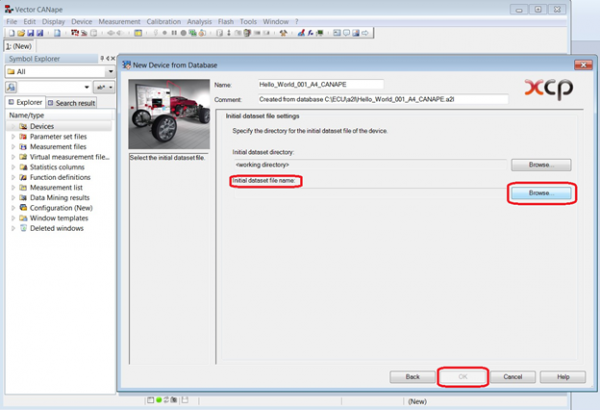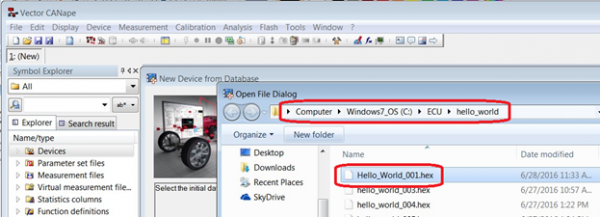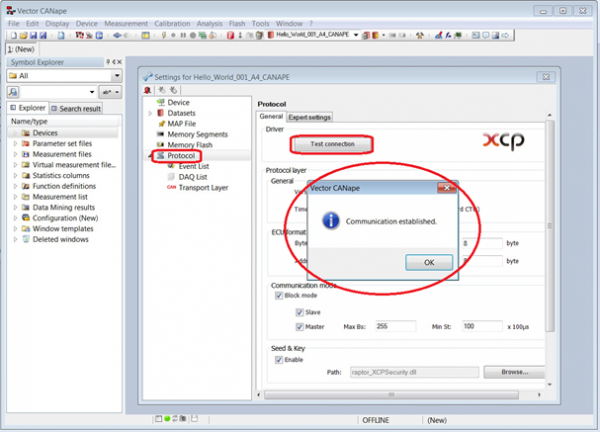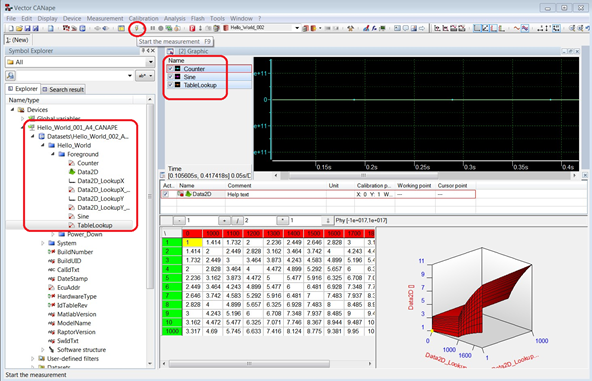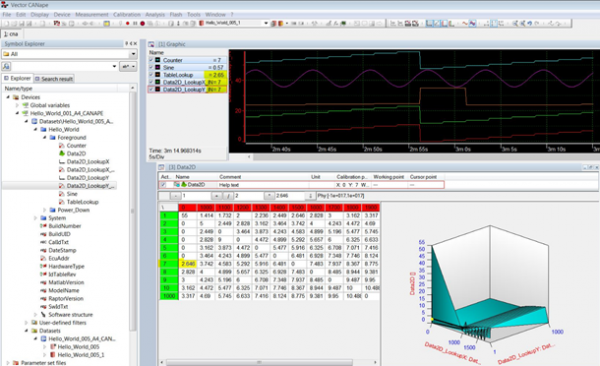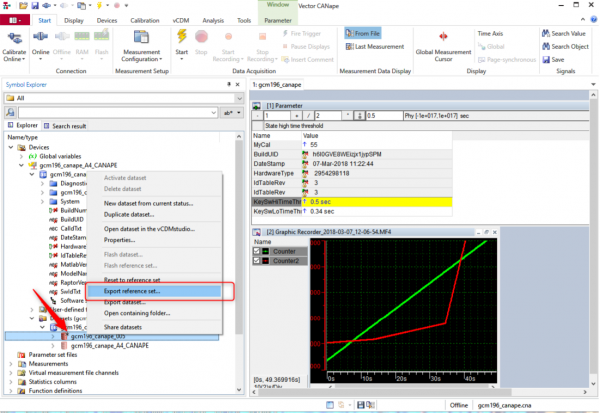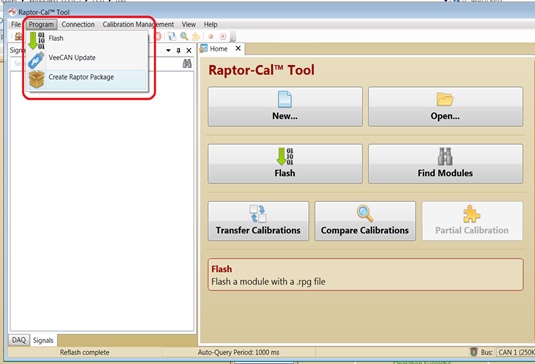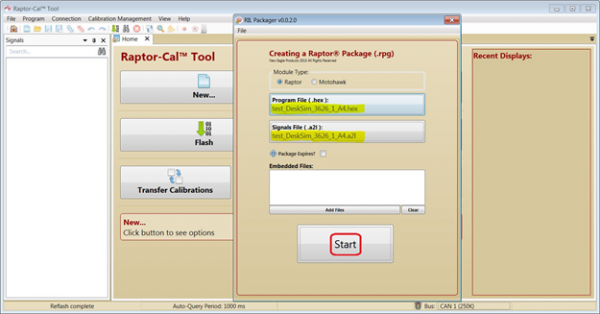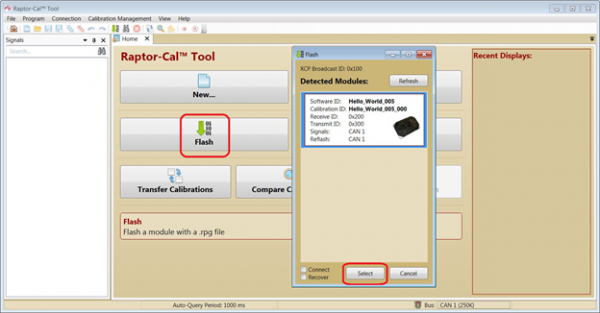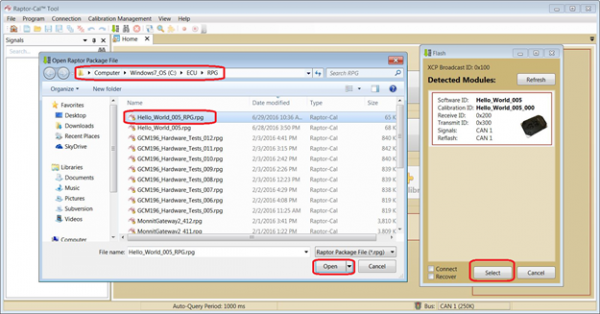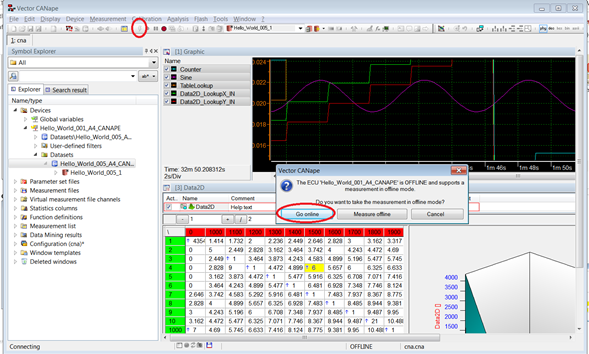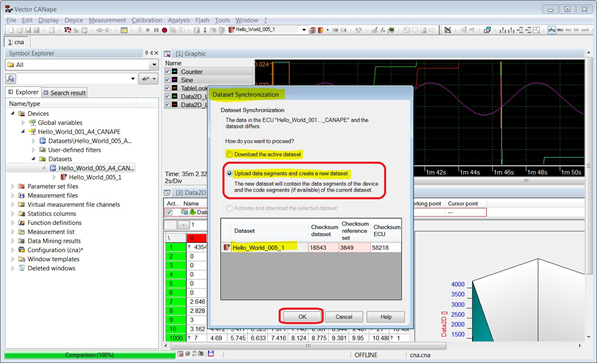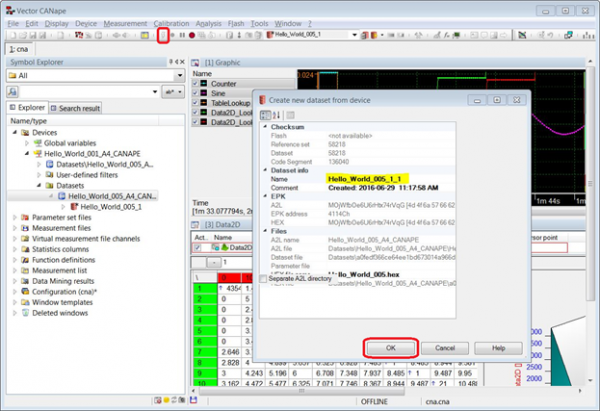Raptor-Dev-Vector-CANape-Support: Difference between revisions
Jump to navigation
Jump to search
(Move instructions for generating A2L files to a separate page, so it won't be duplicated between Vector CANoe & INCA support pages.) |
|||
| (8 intermediate revisions by one other user not shown) | |||
| Line 9: | Line 9: | ||
==Steps to build A2L files for Vector CANape== | ==Steps to build A2L files for Vector CANape== | ||
Please see the A2L File Generation support page: [https://wiki.neweagle.net//index.php?title=Raptor-Dev-A2L-File-Generation Raptor-Dev-A2L-File-Generation] | |||
==Initial Setup with Vector CANape | ==Initial Setup with Vector CANape 16.0== | ||
{| class="wikitable" | |||
|- | |||
| scope="col" style="width: 65%;"| Open CANape, then select “<Create new project>” | |||
| scope="col" style="width: 50%;" rowspan="6"| [[file:vCANape4.png|600px|frameless|border|vCANape1|center]] | |||
|- | |||
| Name the project | |||
|- | |||
| Choose the destination for the project | |||
|- | |||
| Once a project is created right Click on "Devices" | |||
|- | |||
| Click on New Device from > 'Click Database' | |||
|- | |||
| Select the a2l file with “projectName_A4” type from C:\ECU\a2l | |||
|- | |||
| Check the "Activate dataset management" true > click "Next" | |||
| rowspan="3" | [[file:vCANape5.png|600px]] | |||
|- | |||
[[file:vCANape8.png| | | Select the corresponding CAN channel from the drop down menu under "Channel:" | ||
|- | |||
[[file:vCANape9.png| | | Click "Next", no changes needed yet for the Map File Settings, click "Next" again | ||
|- | |||
| Click on browse, and select the .hex file found C:\ECU\project_name | |||
| rowspan="2" | [[file:vCANape6.png|600px]] | |||
|- | |||
| ''Note: This file was created during the Raptor build'' | |||
|- | |||
| Once selected, click OK. A window for settings will pop up automatically. Select “protocol” from the menu on the left and click “Test connection”. This will verify that the project is connected to the ECU in order to run necessary tests. | |||
| rowspan="2" | [[file:vCANape7.png|600px]] | |||
|- | |||
| ''Note: If there is an error, please check if Baud rate is correct.'' | |||
|- | |||
| Press “OK” once communication is established. Now from the explorer on the left, click on the “device name” > Datasets\.. > “project name” > “parameter of interest”. Drag and drop the parameter onto the right. | |||
| [[file:vCANape8.png|600px]] | |||
|- | |||
| Click on the start icon highlighted in the step above. It will take CANape online with the connected ECU. The selected parameters will be updated in real-time. | |||
| [[file:vCANape9.png|600px]] | |||
|} | |||
==Merging Offline Calibration Changes== | ==Merging Offline Calibration Changes== | ||
{| class="wikitable" | |||
[[file:vCANape10.png| | |- | ||
| scope="col" style="width: 105%;" colspan="2" | If you have made offline calibration changes, or received a calibration set from a colleague you may want to merge those changes into the executable to create a new programming file for the ECU. This can be accomplished by using Vector CANape and the Raptor-CAL Tool. | |||
|- | |||
| Once you have made offline changes or opened your calibration file, explore in the ''''Device_Name > Datasets' directory'''. | |||
| scope="col" style="width: 50%;" rowspan="3"|[[file:vCANape10.png|600px]] | |||
|- | |||
[[file:RaptorProgram.png| | | Right click on the dataset of interest then click '''“Export reference set…”''' | ||
|- | |||
| Choose destination and click '''“Save”'''. This will create a hex file with the application and calibration settings (including any changes you made). In order to program this into the ECU, you need to create a RPG file for us with Raptor-Cal. | |||
|- | |||
| '''"Raptor-Cal Tool"'''. | |||
| rowspan="2" | [[file:RaptorProgram.png|600px]] | |||
|- | |||
| Click on '''"Program" -> "Create Raptor Package"''' | |||
|- | |||
| Click on '''"Program File (.Hex)"''' and navigate to your '''new .hex file''' with offline calibration | |||
[[file:RaptorFlash11.png| | | rowspan="4" | [[file:RaptorPackager6.png|600px]] | ||
|- | |||
| Click on '''“Signals File (.a2l)”''' and navigate to the corresponding '''.a2l''' file under '''C:\ECU\a2l'''. | |||
|- | |||
[[file:RaptorECU13.png| | | Click '''"Start"''' | ||
|- | |||
| '''Save''' the '''.rpg''' file that was created and '''close''' the Raptor Package program. | |||
|- | |||
| From the '''"Raptor-Cal Tool"''', click '''"Flash"'''. | |||
| rowspan="2" | [[file:RaptorFlash11.png|600px]] | |||
|- | |||
| Once the module (ECU) has been detected, click '''"Select"''' | |||
|- | |||
| Navigate to '''C:\ECU\RPG''' and open the '''.rpg file''' saved from using the Raptor Package program. | |||
| rowspan="2" | [[file:RaptorECU13.png|600px]] | |||
|- | |||
| Once the file is opened, it will '''automatically flash the ECU''' with offline calibrated changes | |||
|} | |||
===Steps to verify the offline calibration changes=== | ===Steps to verify the offline calibration changes=== | ||
{| class="wikitable" | |||
[[file:vCANape11.png| | |- | ||
| scope="col" style="width: 105%;"| Go to the '''"Vector CANape"''' program and click the '''"Flash" button'''. | |||
| scope="col" style="width: 50%;" rowspan="2"|[[file:vCANape11.png|600px]] | |||
|- | |||
| Click '''"Go Online"''' | |||
|- | |||
[[file:vCANape13.png| | | Choose '''"Upload data segments and create a new dataset"'''. This will allow for the new calibrations flashed on the ECU to by synchronized with the dataset on the hard drive. | ||
| rowspan="2" | [[file:vCANape12.png|600px]] | |||
|- | |||
| Click '''"OK"''' | |||
|- | |||
| Click '''"OK"''' again. | |||
| rowspan="2" | [[file:vCANape13.png|600px]] | |||
|- | |||
| Once again click the '''"Flash button"''' to go online. | |||
|} | |||
Latest revision as of 20:24, 11 March 2021
Vector CANape
The following information is also contained in PDF format: Using Vector CANape with Raptor (PDF)
This information is also included in the 'Documentation' folder of the installation directory for Raptor-Dev.
Steps to build A2L files for Vector CANape
Please see the A2L File Generation support page: Raptor-Dev-A2L-File-Generation
